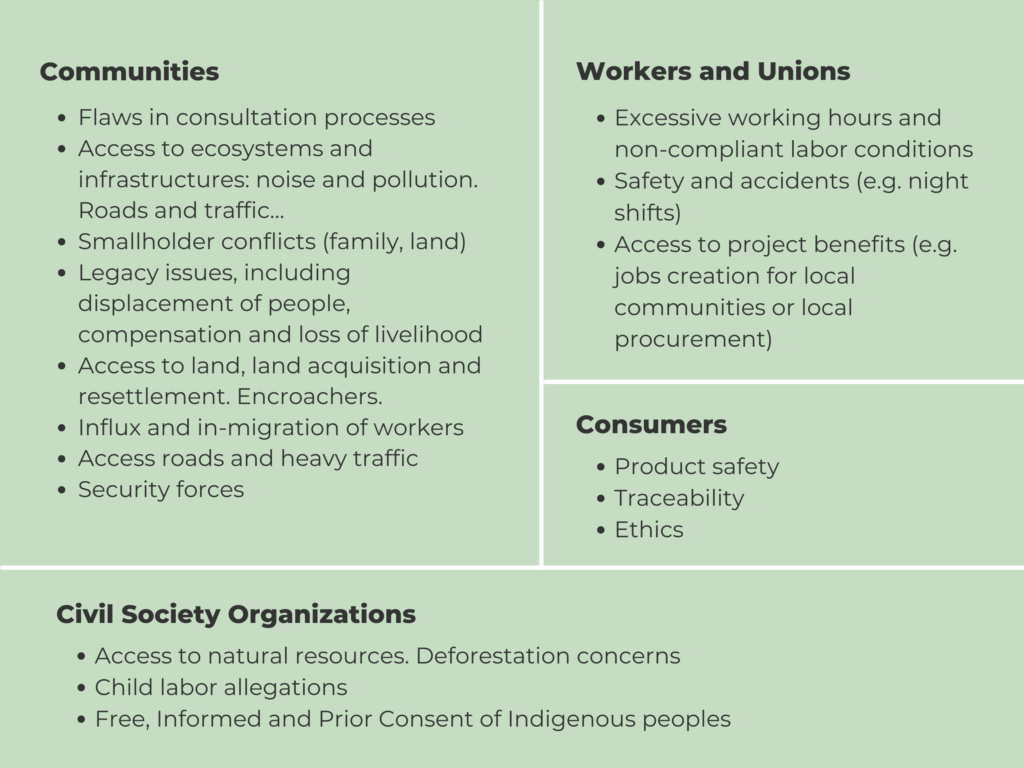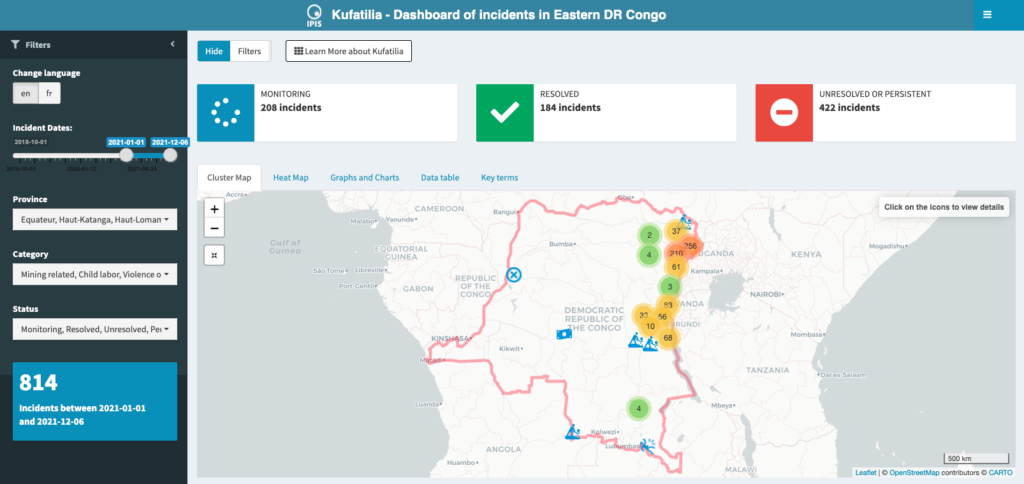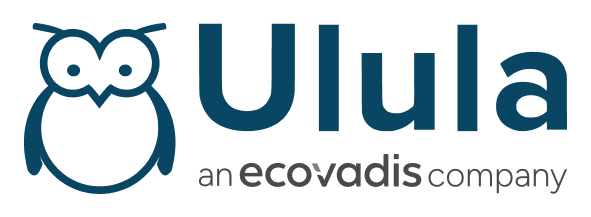This post was written by Thomas Radal from Ulula and Margaux Dillon from Ksapa.
Grievance mechanisms are a key tool in the global push toward responsible business. For the present article, Ksapa reached out to cross-supply chain social risk monitoring and management software experts at Ulula. Together, we look at the type of alerts stakeholders issue and how digital technologies broaden the reach and effectiveness of grievance mechanisms. Finally, we consider 5 success factors for grievance mechanisms to effectively structure and secure responsible business policies.
As countries, businesses and investors converge around mandatory cross-supply chain due diligence, actual impact hinges on streamlined legislation combined with solutions on the ground. As such, the EU directive slated for 2021 is bound to face intense scrutiny as to how it will address current gaps in civil liability provisions, effective enforcement mechanisms and inter-jurisdictional harmonization. A first step towards truly responsible business therefore lies in enforcing effective processes. That is precisely where grievance mechanisms come into play.
Grievance mechanisms not only allow a variety of stakeholders to highlight complaints, they effectively flag strategic and/or sensitive issues on the ground. Without them, risk management and other compliance efforts are akin to looking for a needle in the proverbial haystack. Amid highly volatile environments and cost-cutting injunctions, companies cannot go wrong by focusing on compliance and effective risk management. Now more than ever, grievance mechanisms lend businesses eyes and ears across increasingly complex value chains.
The Theory Behind Grievance Mechanisms
A recent study led by the Corporate Human Rights Benchmark and the World Benchmarking Alliance shows most companies failed to manage Human Rights risks and impacts related to the Covid-19 global pandemic. In fact, less than 10% of the companies described how they considered the risks and impacts of Covid-19 on local communities and vulnerable groups in their own operations and supply chains. Only 6% consulted with worker representatives, communities or vulnerable groups.
Beyond demonstrating their lack of preparedness to pandemic risks, these figures seem to point to a difficulty on companies’ part to identify risks, engaging those affected and launch appropriate mitigative measures. Particularly in times of upheaval such as ours, grievance mechanisms flag risks, open communication channels and outline expected resolutions. As such, it is essential businesses build further competence on what constitutes grievances if they ever hope to manage them and, in time, anticipate their contents.
1. Understanding What Are Stakeholders’ Grievances
A grievance mechanism is a formal, judicial or non-judicial complaint process open to individuals, workers, communities, consumers and/or civil society organizations adversely impacted by business activities or operations

The nature of grievances is as diverse as a company’s ecosystem of stakeholders.
2. Designing Grievance Mechanisms
There are various channels to explore as businesses attempt to design effective grievance mechanisms. Oftentimes, these channels work in combination:
- Most traditional grievance mechanisms include an employee ethics hotline (phone, email, intranet…), customer complaint processes, community liaison officer, contractor hotlines.
- Third-party traditional grievance mechanisms may involve unions, audits, non-profit or general media reports, informal conversations held between communities or other groups with third parties (consultant, municipality consultation…)
- More innovative grievance mechanisms increasingly use digital platforms to facilitate the collection of complaints at scale. They also onboard the relevant expertise to support the investigation and remediation of highlighted cases. On one hand, they provide accessible channels for the users, such as text messages, voice calls. On the other, they integrate monitoring and reporting features, oftentimes in the form of a dashboard.
3. Grievance Mechanisms Are Key for Supply Chain Due Diligence
Corporate reporting tends to focus on past performance and in any case relays information in inherently aggregated format. Grievance mechanisms conversely reflect hyper-localized issues in near real-time. They constitute a prime tool for companies to identify risks throughout their value chains with sufficient granularity and scale. Grievance mechanisms are a prime solution to circumvent the key Issue of supply chain globalization, interconnectedness and complexity.
Another challenge with conventional reporting lies in stakeholders’ critical reading. One should always consider what is not included in corporate reporting, perhaps on par with what is – and why. Seemingly building on the #MeToo movement, grievance mechanisms for instance increasingly flag instances of sexual harassment cases. So why did people not report similar cases beforehand? In a way, it matters not. Grievance mechanisms are only helpful if they adopt the perspective of their intended users and address their issues in a way that they immediately understand and feel comfortable using.
As such, corporate grievances must embed tools to identify and most of all manage the related biases. Someone who could initially appear to be an outlier effectively signals discrepancies between theoretical policies and effective implementation. The fact of the matter is these emerging trends in grievance reporting warrant reassessing communications, awareness-raising, down to the very relevance of the underpinning systems.
5 Success Factors For Grievance Mechanisms
There can be no one-size-fits-all solution. Issues, people, context and a myriad of other factors play a key role in designing effective grievance mechanisms. If nothing else, this tool is intended to guide entire business ecosystems as well as those potentially impacted by their operations towards a non-judicial resolution. As such, grievance mechanisms cannot – and must not – replace effective judicial systems. In other words, they must not impede access to justice.
The United Nations’ Guiding Principles on Business and Human Rights offers a sound starting point for launching or improving readily-available system, as it outlines the soft law for their effectiveness. In short, grievance systems must be altogether legitimate, accessible, predictable, equitable, transparent and right-compatible. They are also a source of continuous learning, based on engagement and dialogue. Only then can companies evaluate their local environment and externalities.
Here are 5 success factors to get started and effectively leverage technology for your grievance system:
1. Ensure System Accessibility

Closing the engagement loop. Source: Ulula
Like any new policy, tool or system, grievance mechanisms can only be deemed accessible if the implementing company openly communicates its existence. Not only that, it must also adapt to commonly used access points for the intended users and perhaps run the extra mile to reach vulnerable users who are typically harder to engage. Looking one step further, companies can also consider the socio-economic and geographical context as a key indicator of when and where grievances may arise and adapt their outreach accordingly. Conversely, grievance mechanisms simply embedded in corporate website cannot do the job.
Ulula’s practical experience implementing grievance mechanisms stresses the importance of addressing the digital divide to reach all stakeholders and potential grievants. That may mean facing particularly low technological thresholds, themselves linked to literacy levels, for example. As a result, teams must strike a balance between harnessing digital technologies and developing a digital comfort zone. Part of resolving that equation depends on using stakeholders’ preferred channels, from text messaging to voice calls, WhatsApp-like applications and emails… or a combination of these methods. By contrast, a system imposing a single grievance channel, be it email-only, hotline-only or mobile app-only, points to a flagrant lack of understanding of its technological surroundings. It is unlikely to find uptake, let alone be efficient.
Grievance mechanisms work both ways: if a grievant alerts a company to a likely risk, that person must be kept informed during the process. A grievance mechanism is only so good as the evidence it provides as to its effectiveness and relevance to stakeholders. Companies would be well advised to publicly disclose information to show its mechanism is indeed working, effective and trustworthy.
2. Nurture Trust
Harnessing digital technology is a conduit to empowering trusted local partners to either promote the use of the grievance system among target audiences or report grievances in their name. As such, stakeholders must trust both the system in its own right, but also the people behind it. That notion of trust is particularly potent with regards to allegations of child labor. Indeed, as endemic as it might be in certain supply chains, it will more often than not attempted to dissimulate instances of child labor. Of course, children seldom enjoy access to grievance channels, if they even know about their existence at all. In order to detect it, companies must empower local organizations to detect and report incidents.
Trust only runs so far as an organization is able to demonstrate its system has been adapted to the local context and tailored to specific issues at hand. To be trustworthy, grievance mechanisms must involve affected stakeholders from design to case review, in a way that participants directly experience the impact of their providing feedback. That said, as much as their direct input is of the essence, the grievance system must also protect them and the data they share, given the inherent sensitivity of the information disclosed.
Once companies ascertain the efficacy of their grievance mechanisms, they must embark in a structured process of continuous improvement. Indeed, collecting grievances on a variety of issues begs the question of what your system does not necessarily pick up. Building on existing stakeholder engagement platforms and management processes, companies would do well to challenge their system to outline solutions capable of addressing emerging or outlying trends. Consider a community member issuing a grievance relative to the nuisances or pollutions generated by an industrial site. Only contractors come along for a temporary infrastructure development and behave in a manner contrary to the rights of local women. It is far from self-evident a grievant would use the same mechanisms for an entirely different matter. What is more, if community ties with local police are not based on trust or if family members are at risk of losing their livelihood, grievants are left with precious little leeway. This example we have encountered in our work goes to show how essential it is for companies to constantly revisit their alert typology to continually improve of complement existing mechanisms.
Case in point. Below is an illustrative dashboard from a project in the Democratic Republic of Congo. The system uses Ulula’s technology in such a way as to empower a network of 24 local non-profits to build the proposed system’s legitimacy and report incidents in the name of communities and individuals across eastern Congo. As a measure of its effectiveness, more than 2200 cases were reported since 2018, including over 200 instances of child labor in 2020 alone.

An example from Eastern DRC: 2276 incidents were reported between 01/01/2019 and 05/02/2021 by way of a grievance dashboard (Source: IPIS)
3. Workplace Versus Landscape Grievance Mechanisms
The question of scope is of course frequently asked by the organizations who approach us. Human Rights due diligence regulation increasingly emphasizes effective grievance mechanisms, well beyond the scope of companies’ direct suppliers. As companies have more limited – and often lack direct – interactions with suppliers across their extended supply chains, they require new approaches to help them identify and mitigate risks in key sourcing regions:
- A workplace approach – In most instances, companies have direct business relationships with their production units to the extent of what constitutes the first tier of their supply chain. These trusted relationships allow them to directly implement a grievance mechanism.
- A landscape approach – Moving further down the supply chain, most organizations tend to lose visibility on the exact location of their subcontractors, production units and plantations. While that is particularly true of raw materials and commodities, companies generally are able to define regions, provinces or industrial parks from which they source. They can therefore reach out to these organizations and set up grievance mechanisms in a dense industrial location, where they know they source materials.
Hybrid approaches combining workplace grievance mechanisms and landscape initiatives are important to effectively identify, prevent and mitigate adverse human rights impacts.
4. Work Towards Remediation
In December 2020, workers in Hawassa (Ethiopia) reported they had worked unpaid overtime to make up capacity after other workers were furloughed at the start of the pandemic. Grievances included excessive hours, unpaid overtime, health and safety, worker rights and were publicly tied to leading apparel businesses with clear policies to the contrary. A local non-profit was involved, in the form of the International Labor Organization’s Better Work program, pointing to a disconnect between corporate policy and implementation on the ground.
Ideally, receiving such a grievance should lead to companies taking the following steps, so that they may proceed toward remediation:
- Authenticate complaints though an anonymous 2-ways communication
- Investigation the complaint to provide targeted recommendations for improvements.
The investigation aims to establish the nature of the issue raised by an individual. Whether it is deemed systemic or isolated clearly affects the level and nature of the necessary remediation. In 2019, Ulula was involved in such an investigation into a palm oil plantation owner, accused of robbing his employees. The investigation used a mix of Worker Voice surveys of the broader community and on-site interviews. The inquest pointed to a systemic issue, where plantation owners were regularly asking their employees to pay for their lunch to maintain their job.
Looking to the future – particularly in light of the upcoming EU directive on mandatory Human Rights due diligence – businesses will increasingly be scrutinized. What counts is not only the ability to map their risks, but also (and perhaps most importantly) engage in cross-cutting risk remediation. What is at stake is businesses’ ability to identify high-risk activities, predict and ultimately prevent the very occurrence of recurrent risks. That is where Ksapa comes in. We regularly work with companies and investors to transition towards effective risk remediation and resilience, by leveraging innovative methodological, technological and financial tools.
5. Define Roles and Responsibilities
For any lasting remediation to occur, organizations must clearly allocate roles and responsibilities in managing grievance mechanisms. There are 3 essential roles and responsibilities to clarify:
- Who is responsible for case monitoring (grievance reception and management: authentication, investigation, remediation and quality control)?
- Who is responsible for implementing the remediation plan?
- Who can access data and information and specifically, what type of information?
As part of a palm oil grievance monitoring project in Indonesia, Malaysia and Guatemala, implementing organizations, as trusted local partners, were appointed to promote the proposed grievance mechanism among targeted workers. It was also their responsibility to manage cases by way of the Ulula platform. Meanwhile, palm producers were involved in the daily monitoring and remediation of grievances. As such, they could access both the grievance case management platform and the corresponding dashboard. This includes analytics such as average response time, the ratio of issues by level of priority and complainant satisfaction rate. Finally, traders and B2C brands were granted access to high-level analytics relative to system performance on the ground. This way, they could notably track evolving categories of complaints as well as remediation progress rates over time.
Conclusion: Time to Tackle Human Rights Risk Mitigation
We are now 10 years into implementing the United Nations’ Guiding Principles on Business and Human Rights, particularly with regards to implementing effective grievance mechanisms. We provide 5 practical success factors for technology to support effective grievance mechanisms implementation. Our rationale is as follows: in 2021, setting up grievance management systems in empty spaces will not cut it. Stakeholders know it. We would like to think companies do too.
While we have certainly come a long way, it is as essential as ever to assess pre-existing mechanisms before anything else, which itself depends on effectively engaging stakeholders on the ground. Of course, these participatory approaches demand time, expertise and resources. They also hold the key for the effective implementation of responsible business policies as well as the overarching corporate license to operate. Given the current uncertainties, such proactive investments can only cost less than full on crisis management… to say nothing of its potentially lasting impacts. Reach out to our teams to see we might help you get started!
About the authors:
 |
Thomas Radal is supply chain expert. He lived for 7 years in Bangladesh and China, where he visited more than 250 factories and numerous plantations of several commodities. He worked on developing concrete actions to drastically improve working conditions, traceability and prevent environmental pollution of an end to end supply chain for a large French retailer, from raw materials to the finished goods. He is currently based in France, working as a consultant and the Europe Representative of Ulula to promote the innovative worker and community engagement technology. |
 |
As a sustainability and corporate responsibility consultant, Margaux Dillon joined Ksapa with international experience in public, private and non-profit organizations. She had previously worked for the Deloitte and Quantis sustainability consultancies, lobbied for environmental research on behalf of the INRA and contributed to Total’s extra-financial reporting. A Franco-American citizen, Margaux holds sustainability certifications from the IEMA and Centrale-Supélec on top of a Masters degree in History, Communications, Business and Internal Affairs. She is fluent in French, English and Spanish. |

